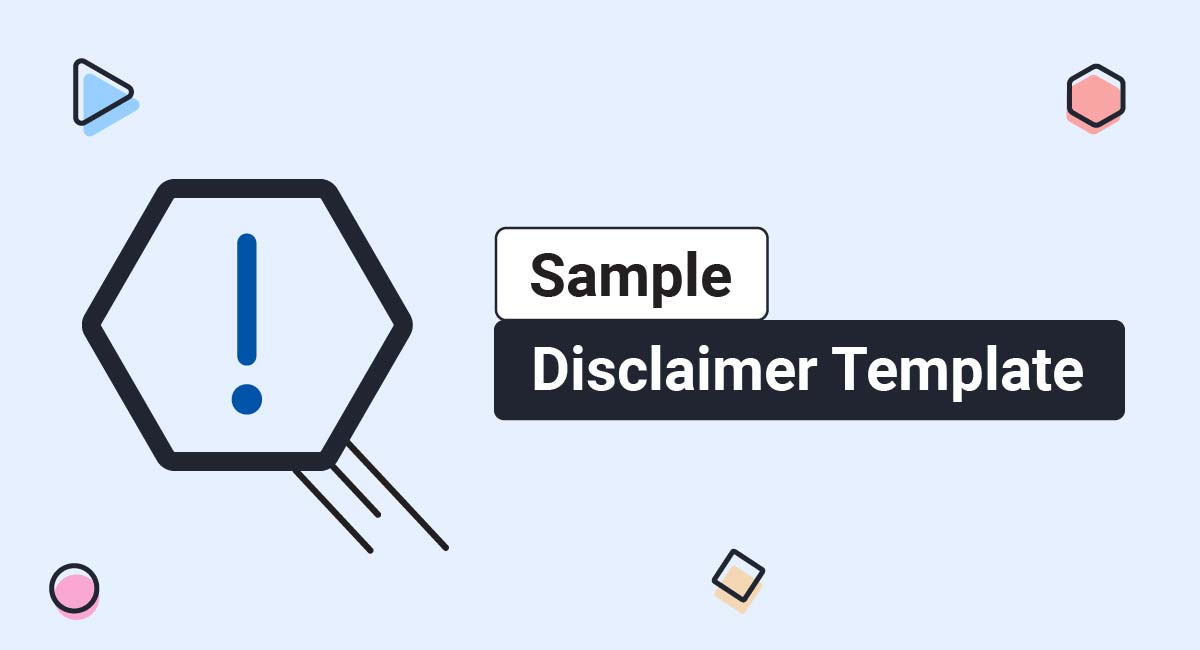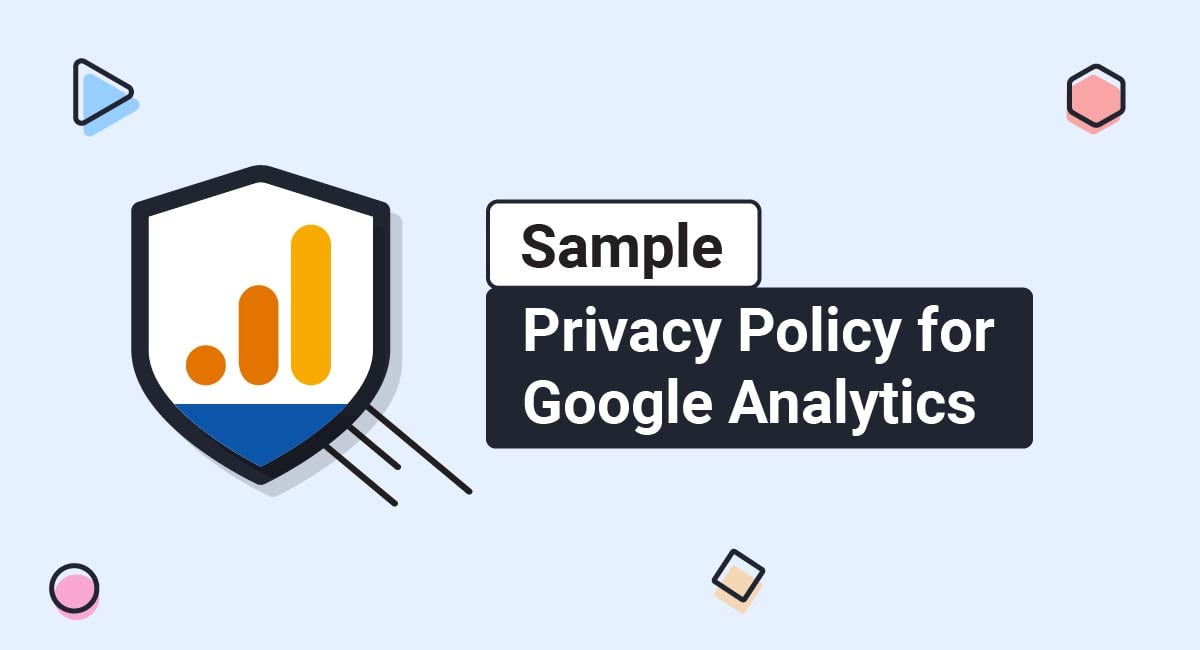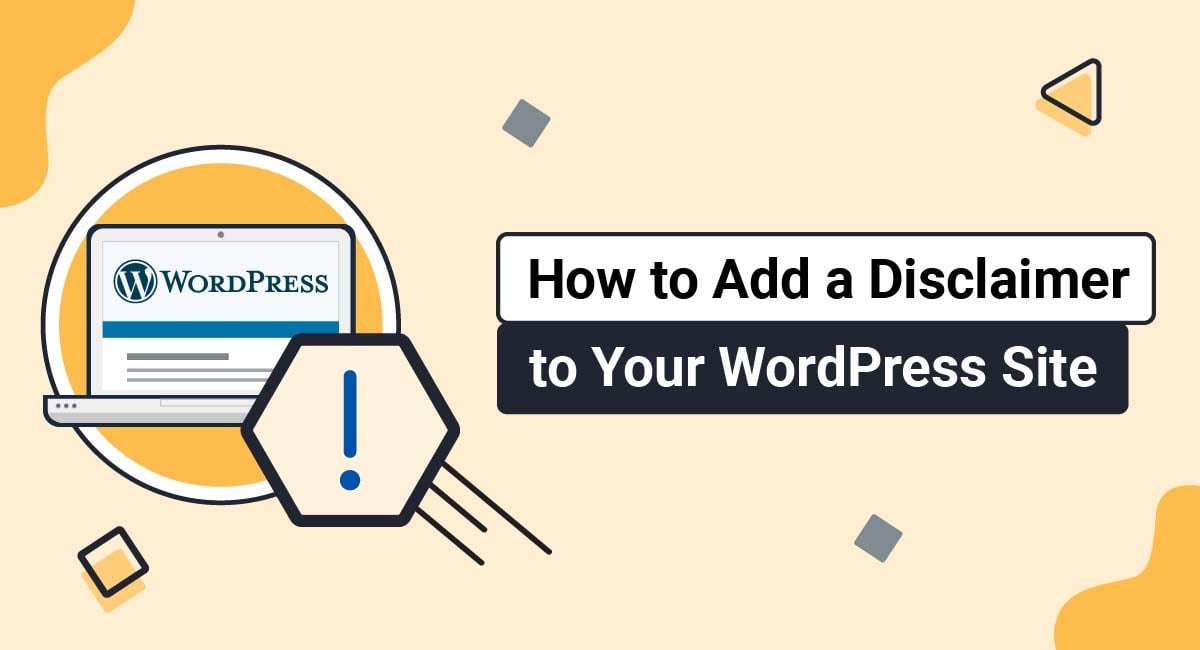A Disclaimer on your app or website is often the best way to address specific points of liability that could fall outside a Terms and Conditions agreement or a Privacy Policy agreement.
This article will discuss some of the most common and important disclaimers and what purposes they serve while showing examples from real businesses that use these disclaimers.
We've also put together a Sample Disclaimer Template that you can use to help write your own.
Our Disclaimer Generator can generate a legal disclaimer for your business, website or mobile app. Just follow these steps:
-
At Step 1, select where your Disclaimer will be used.

-
At Step 2, add in information about your website/app and business.
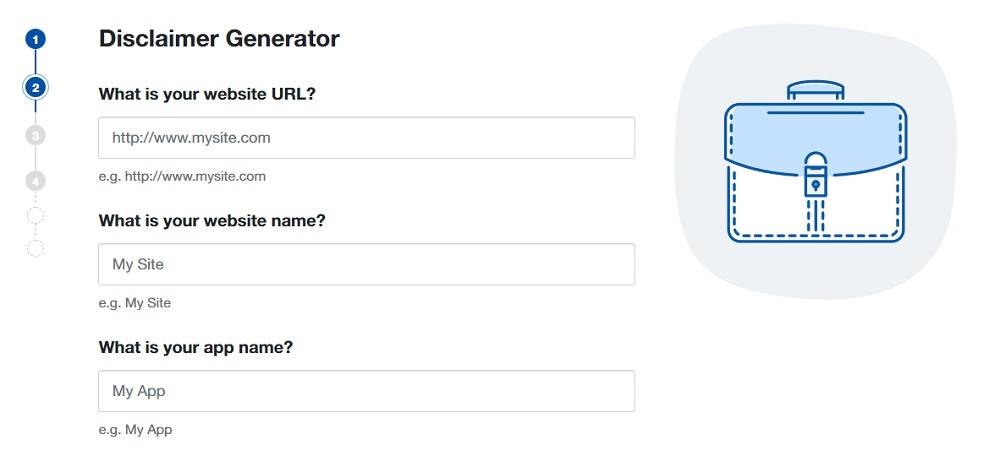
-
Answer some questions about your business practices.
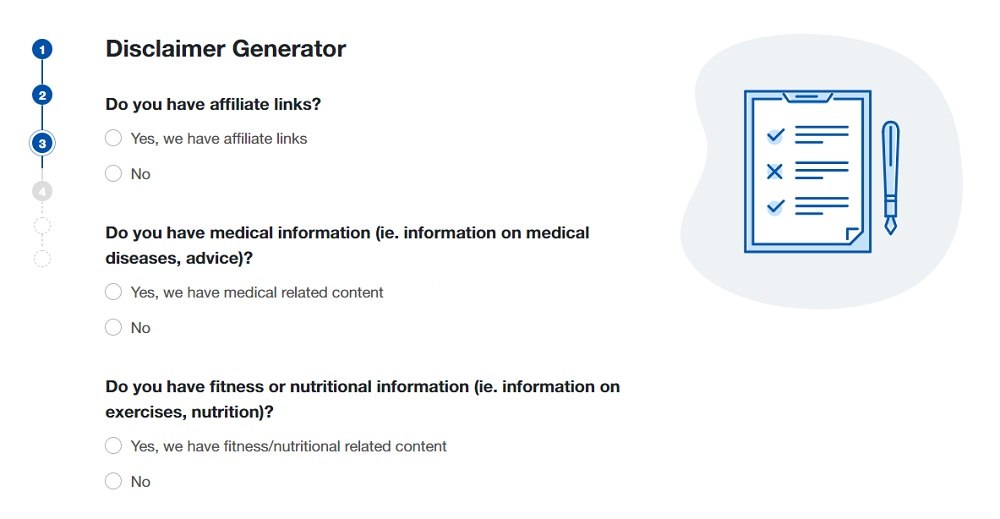
-
Enter an email address where you'd like to receive your Disclaimer and click "Generate."

Done! You'll be able to instantly access and download your new Disclaimer.
- 1. What is a Disclaimer
- 1.1. FAQs on Disclaimers or Disclosures
- 2. When to Use a Disclaimer
- 3. Disclaimer Examples
- 3.1. Medical Disclaimer
- 3.2. No Professional Relationship Disclaimer
- 3.3. Legal Advice Disclaimer
- 3.4. Blog Disclaimer
- 3.5. Content Disclaimer
- 3.6. Affiliate Disclaimer
- 3.7. Earnings Disclaimer
- 3.8. Results Not Typical Disclaimer
- 4. Should You Display Disclaimers in Your Terms and Conditions and Privacy Policy?
- 5. Summary of What a Disclaimer Is
- 6. Download Sample Disclaimer Template
- 6.1. Sample Disclaimer Template (HTML Text Download)
- 6.2. Sample Disclaimer Template (PDF Download)
- 6.3. Sample Disclaimer Template (Word DOCX Download)
- 6.4. Sample Disclaimer Template (Google Docs)
- 6.5. More Disclaimer Templates
What is a Disclaimer
A Disclaimer is a statement aimed to address specific points regarding liability.
Disclaimers have a long legal history. They generally have two main purposes:
- To warn
- To limit liability
A warning sign is an example of a disclaimer that everyone would be familiar with.
"No trespassing" signs alert passing individuals that they are near a private land boundary and also excuse the landowner of some liability if people visit uninvited and get injured.
Sometimes the warning and limitation of liability are based on statutory law. For example, the state of Washington in the United States has a law that prevents people injured at equestrian facilities from pursuing legal damages.
Any business that boards, trains or allows the riding of horses has to have a specific sign to enjoy this protection from liability. This sign acts as a disclaimer much like a "No trespassing" sign in that it informs and specifies limits on facility responsibilities:
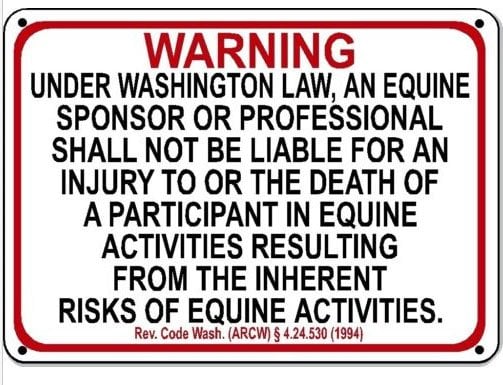
Another area where you would find disclaimers is books.
Storey Publishing places a general disclaimer in most of its works. A book by Allan Hamilton, M.D. titled Zen Mind, Zen Horse: The Science and Spirituality of Working with Horses, contains this disclaimer because Dr. Hamilton is a neurosurgeon and the book offers horse training advice along with explanations of equine neurology:
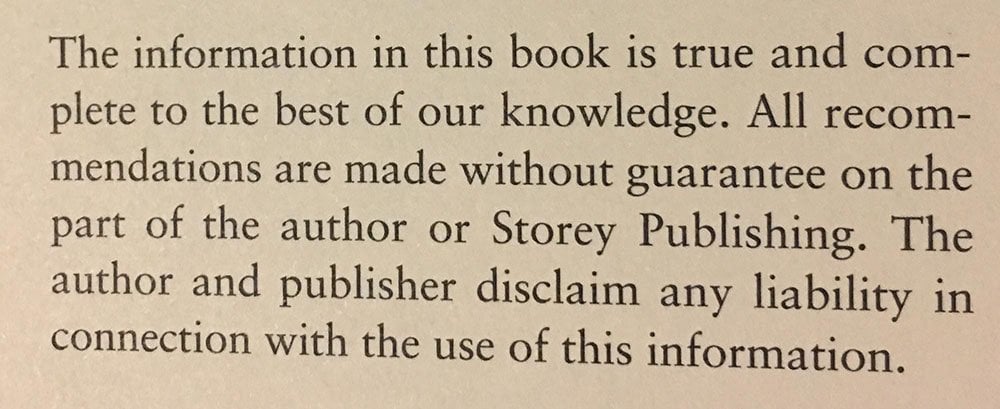
Placing a disclaimer on websites and apps has the same purpose as those employed before the internet. While the warning element remains, the primary concern is about limiting legal liability and responsibility.
A common area where disclaimers arise is on websites offering alternative health or medical advice.

iHerb sells vitamin and herbal supplements online. It's also very careful on how it represents its information and adds this disclaimer:

The detail in this medical disclaimer from iHerb is understandable. Supplement companies can make big claims and yet, these have to be discerned thoroughly. iHerb makes it clear that while the products are available for purchase, that does not mean they will always yield the intended benefits.

Intertek, a consulting company, has a legal disclaimer page that explains that the company provides the best information possible but will not be held liable if the user does not enjoy the intended results.
Intertek's disclaimer page is titled "Legal Disclaimer" but is really a catch-all of liability:
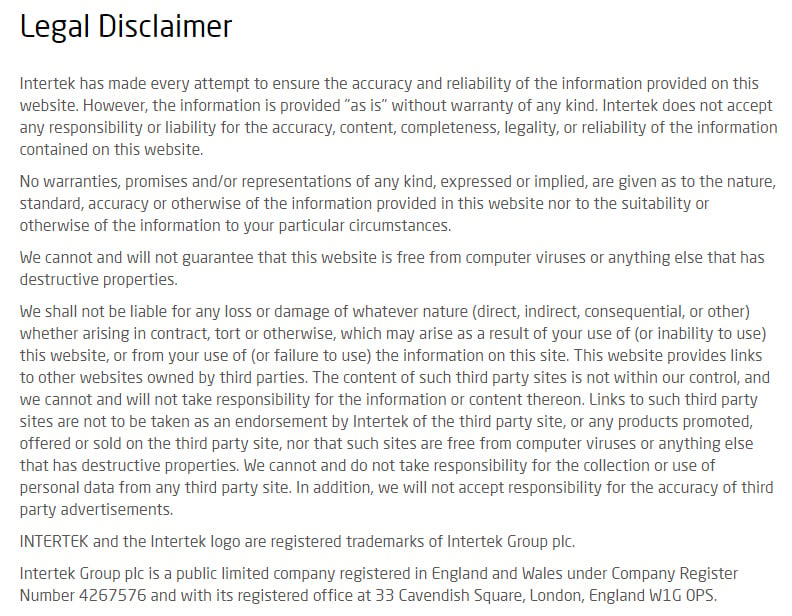
These are examples of disclaimers that are presented as separate documents. Sometimes, however, disclaimers are included in the Terms and Conditions agreements of a website or mobile app.
FAQs on Disclaimers or Disclosures
Here is a list of frequently asked questions that you may find useful.
There are a few disclaimers that are regulated by law and mandatory in certain situations, but generally disclaimers are optional and used to benefit business owners.
For example, affiliate disclaimers are required by the FTC and by many third parties. Disclaimers like "Views Expressed" and "Errors and Omissions" disclaimers are not required, but having them will help limit your legal liability.
You should use disclaimers because they help limit your legal liability and keep your users informed. In some circumstances, you should use disclaimers because they're legally required.
For example, if you operate a blog that gives financial advice, having a "Use at Your Own Risk" disclaimer can help limit your liability in the event that someone takes your advice and loses a fortune. The disclaimer makes it clear that you aren't responsible for anyone who uses your advice and has adverse consequences.
If you engage in affiliate marketing, the FTC and many third parties require you to post a disclaimer informing the public that you use affiliate links. You should use a disclaimer here to avoid violating the law.
This depends on the nature of your website, business or blog.
Here are some of the most common disclaimers and when each should be used:
- Views Expressed: Used by experts or professionals when writing personal opinion content that's in the same field of study as their career. For example, a climate change scientist would use this disclaimer when writing an editorial or opinion piece that involves the topic of climate change. The disclaimer would say that the opinions are his own and not that of his employer.
- No Responsibility/Disclaimer of Liability: Used mostly by ecommerce companies, software companies and others that offer products or services. This disclaimer limits liability for any damages that may arise by the use of the products or services.
- Past Performance: Used mostly with products and services that seem to promise results. For example, a diet pill company or a financial planning company can disclaim that "past performances don't necessarily indicate future results."
- Use at Your Own Risk: Used often with businesses that sell products that may be considered dangerous or risky to use. For example, a company selling chainsaws can disclaim that you're using their chainsaws at your own risk and if injury arises during the use, it isn't the company's fault.
- Copyright Notice: Used almost universally to protect personal content, intellectual property, website designs and other proprietary creative content.
- Errors and Omissions: Used universally to protect businesses in the event that the website content has an error or omission in content that a user may rely on to some detriment.
- Affiliate Links: If you use affiliate links, the FTC and third parties such as Amazon require this to be disclosed.
- No Professional Relationship: Used mostly with professional bloggers. For example, a lawyer who runs a personal blog dissecting legal cases and explaining laws would use this disclaimer to let her readers know that there is no professional relationship formed between her and her readers. Her blog is simply there for information and entertainment purposes, not professional purposes.
Disclaimers should always be displayed somewhere conspicuous.
Some people choose to create a separate "Disclaimers" webpage and link it to their website footer alongside other important legal pages (such as a Terms and Conditions agreement and Privacy Policy).
Others choose to place the disclaimer text directly on webpages or directly in the website footer.
You can include disclaimers in your Terms and Conditions agreement.
Note that legally-required disclaimers like affiliate disclaimers must be displayed as close to the affiliate links as possible.
When to Use a Disclaimer
There are particular situations that require disclaimers more than others.
If your business would benefit from any of the following disclaimer types, consider posting a disclaimer in a conspicuous place on your website or through your mobile app to keep your users informed and yourself legally protected.
Disclaimer Examples
Medical Disclaimer
Medical disclaimers let users know that you are not giving medical advice, you are not to be held liable for anyone's medical issues and that you suggest they seek professional medical attention if needed.
The examples from WebMD and iHerb shown above emphasize that this is an important area for having disclaimers.
Here's another example:
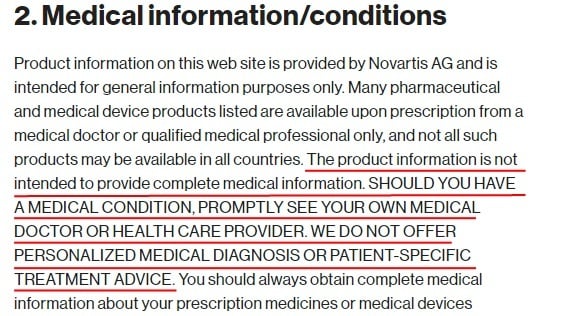
For example, people will often Google their symptoms before making a doctor's appointment, making disclaimers regarding the effectiveness of online medical information or supplements very important.
The last thing your company needs is to face a lawsuit due to misuse of your product or information that leads to someone becoming very ill or even dying.
Medical disclaimers are often very detailed, like with iHerb or WebMD.
However, if you merely provide a platform for doctors and other medical professionals to share information with the public, a disclaimer will be more simple.
You can include these and any other disclaimer within apps, as seen here:
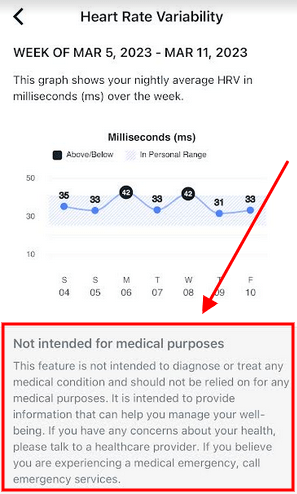
No Professional Relationship Disclaimer
This disclaimer makes it clear that there is no professional relationship created between the website owner and the reader/visitor.
People rely on professional advice and often do not make the distinction between hiring a professional and reading an expert's blog.
Attorneys especially face this ordeal.
Potential clients may interpret an attorney's blog as legal advice and pursue remedies if that fails to work for them.
Amy Porterfield helps entrepreneurs, educators and online experts build better online businesses, which clearly means she's going to be giving advice and recommendations. She has a blog and a podcast where she shares her thoughts, tips and informative content. Amongst her many disclaimers, she includes a "No Professional-Client Relationship" disclaimer:

The disclaimer notes that simply using any of the resources made available does not create a professional relationship between the parties. This is important because certain rights come with such relationships. If Amy had a legal obligation as a professional in a contractual relationship to everyone who read a blog post of hers, you could see how that would get out of control, and fast.
Legal Advice Disclaimer
This disclaimer lets people know that the legal information your website offers is not to be taken as direct legal advice, and you are not to be held liable if someone takes your content as advice, implements it and has bad results.
Here's an example of a very standard, typical legal advice disclaimer:

Note how it begins by stating that the website author is not a lawyer and should not be taken as offering legal advice. If you are a lawyer you can still include this clause (and very much should!), but can just leave out the part stating you aren't a lawyer. The rest of this clause will apply regardless.
If you provide a professional service consider a disclaimer if:
- Your reader may be confused about duties you owe them and leave you vulnerable to liability (as with attorneys, legal advice and informative blogs)
- You are advising in an area that is not necessarily within your expertise.
This allows the reader to have a clear understanding of your relationship to them and puts them on notice that your tips or advice should be verified by another professional before readers act on them. Otherwise, they assume the risk.
Blog Disclaimer
If you run a blog where you share your thoughts, opinions or personal content, you should consider a general blog disclaimer that makes note that your content is just your opinion and that you can't be held liable for anyone relying on it for more than just that.
Here's an example of a simple blog disclaimer that accomplishes this:
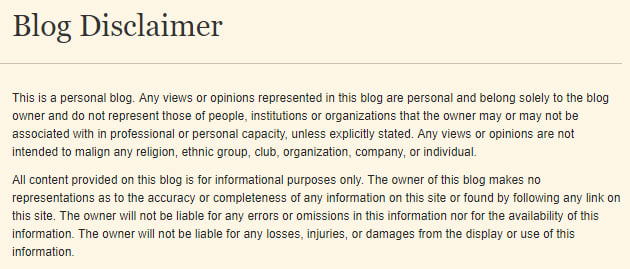
The disclaimer also notes that the content isn't intended to offend or insult anyone.
Content Disclaimer
If your blog allows others to post content, such as with blog post commenting, or if you provide links to third-party resources, consider a content disclaimer. This type of disclaimer will note that you aren't responsible or liable for anything anyone else posts, shares or transmits on your site, or anything on any other sites that you link to. It's a good catch-all way of disclaiming content created by anyone else, even if it's on your site or shared by you via a third-party link.
Here's an example of a content disclaimer from fitness and wellness coach, Coach Erik:

Here's an example of a similar disclaimer:

You can have an additional content disclaimer that addresses accuracy of information, stating that your company can't be held responsible for things like incomplete or inaccurate information, typos or omissions. While the other content disclaimers address subjective content issues, this type of clause deals more with objective things, like unintentional mistakes or errors.
Here's an example of this:

Affiliate Disclaimer
This type of disclaimer discloses that you promote affiliate links and may get compensation from purchases via your links.
Affiliate relationships enter the sticky territory, especially if you are paid for reviewing products.

In 2009, the Federal Trade Commission (FTC) in the U.S. passed rules requiring the disclosure payments received for endorsing products. That requires disclaimers if you have a commercial relationship with another entity where you advance their product or service. These types of disclaimers are less about avoiding liability and more about informing users.
Sewing.org offers a blog with craft tips and reviews products. It offers this disclaimer regarding reviewed products and specifically mentions the FTC in the disclaimer:

Here's a Reviews disclaimer from Amy Porterfield. The disclaimer notes that sometimes incentives might be provided to the site in exchange for reviews. Amy makes sure to let readers know that all reviews are always good-faith, honest opinions regardless of whether a discount or incentive was offered in exchange for the review:

It's not only fair, but it's legally required that you inform your readers about any commissions, compensation or payments you receive by reviewing or endorsing products.
Earnings Disclaimer
If your site deals with information that's intended to help others boost income, you should have an earnings disclaimer. This disclaimer will be relevant for websites that offer things such as stock market and investing advice, professional life-coaching, career advice, gambling tips and other content that someone can reasonably rely on to boost income or earnings.
Include a disclaimer that states that past successes or successes of others are not a guarantee that everyone will have such successes. This is a type of "results may vary" disclaimer. This will limit your liability in case someone relies on your advice and doesn't have an increase in earnings.
Here's an example from Amy Porterfield:

Results Not Typical Disclaimer
This disclaimer simply states that whatever results are discussed or disclosed on a website are not typical. So, users should not necessarily expect to have the same or even similar results.
This is very common with diet and weightloss companies. Here's an example from the Atkins diet website:
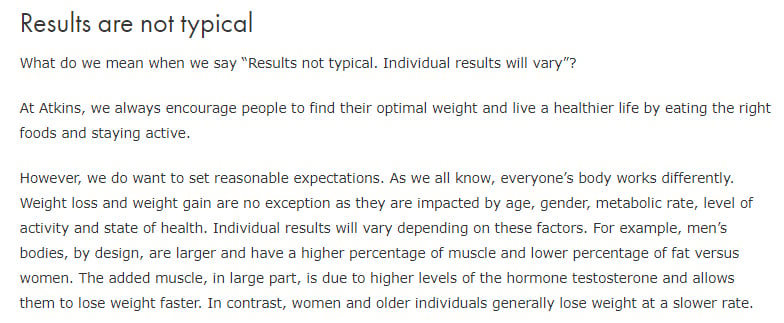
Disclaimers offer good legal protection when you identify specific legal risks.
Medical, professional, and affiliate circumstances definitely require a disclaimer. If your product, service or content falls under a different category, a disclaimer will merely act as reassurance.
Identify your risks and then decide if you require this extra content in your legal agreements or on your website and/or through your mobile app.
In sum, using a disclaimer is a solid, simple way to keep your readers and customers informed. You can create one (or many, if needed) in just a few minutes and add them to your website as easily as you'd add other important content.
Should You Display Disclaimers in Your Terms and Conditions and Privacy Policy?
Yes, a standard place to display your disclaimers is within your Terms and Conditions agreement or your Privacy Policy.
Many businesses choose not to have disclaimers because they believe the topics are covered in the Terms and Conditions and Privacy Policy agreements of their websites or apps.
In some cases, this is true. Both agreements will likely contain disclaimer-type language that can act as protection against liability.
The Terms and Conditions agreement acts as a set of rules for using the online service and the Privacy Policy explains how you handle personal data.
There can be standards of behavior for users in the Terms and Conditions and limits to the personal data collected in the Privacy Policy. As long as conduct proceeds as addressed in these agreements, you are protected.
However, there are differences which make disclaimers essential.
If there's a specific risk involved with the use or misuse of your service, a disclaimer addresses that much better and much more clearly.
Outlining these risks directly and making the disclaimer easy to locate is a better way to get information to your users than just burying content in a Terms and Conditions or Privacy Policy, which may not serve as enough warning to your users.
Even then, there are businesses that dabble in higher risk transactions but do not have a disclaimer. Instead, they opt to include disclaimers in other legal agreements.
![]()
One example is the general disclaimer of warranties, seen here in Amazon's Conditions of Use page. Notice the all-caps easy-to read font and clear language rejecting warranties and limiting liability:


Likely due to the fact that it only trades in information, WebMD also keeps its disclaimer in its Terms and Conditions page. However, it's very conspicuous and located in the introductory content of that document:
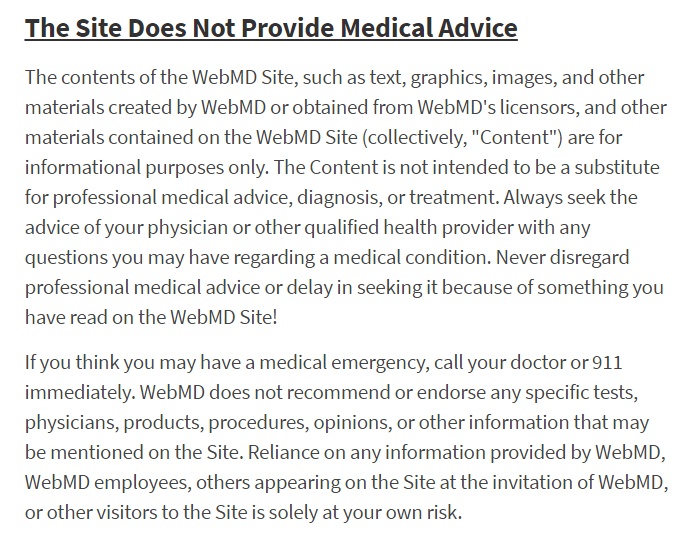
Summary of What a Disclaimer Is
Disclaimers work the same way as your other legal agreements. They give users a heads-up on what to expect and make the limitations of your content, product or services known.
If your disclaimer is easy to find or part of an accessible FAQ, legal agreement or page of its own, it is likely for a court to agree that the liability is on your user rather than your company for anything disclaimed, within legal limits.
Developers, bloggers, and writers use them because they do more to hurt than help. If there's a high risk of misuse, err on the side of providing disclaimers. However, less risky industries can likely proceed fine without them.
Download Sample Disclaimer Template
Generate a Disclaimer in just a few minutes
The Sample Disclaimer Template is available for download, for free, and it includes these sections:
- General information
- Fitness information disclaimer
- Affiliate links disclaimer
- External links disclaimer
- Fair Use disclaimer
- Views Expressed disclaimer
- No Responsibility disclaimer
- "Use at Your Own Risk" disclaimer
Sample Disclaimer Template (HTML Text Download)
You can download the Sample Disclaimer Template as HTML code below. Copy it from the box field below (right-click > Select All and then Copy-paste) and then paste it on your website pages.
Sample Disclaimer Template (PDF Download)
Download the Sample Disclaimer Template as PDF
Sample Disclaimer Template (Word DOCX Download)
Download the Sample Disclaimer Template as a Word DOCX
Sample Disclaimer Template (Google Docs)
Download the Sample Disclaimer Template as a Google Docs document

More Disclaimer Templates
More specific Disclaimer Templates are available on our blog, including the following:
| Sample App Disclaimer Template | A Disclaimer for mobile apps. |
| Testimonial Disclaimer Sample | A Disclaimer for testimonials. |
| Sample Fair Use Disclaimer Template | A Disclaimer for fair use. |
| Sample Warranty Disclaimer Template | A Disclaimer of warranties. |

Comprehensive compliance starts with a Privacy Policy.
Comply with the law with our agreements, policies, and consent banners. Everything is included.
